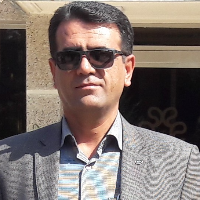Consequences of changing cultivation patterns on low-yield steep lands to rainfed gardens A case study of Kabgian District of Boyer Ahmad County
This study was implemented to identify the economic, social, and environmental consequences of changing cultivation patterns on low-yield steep lands to rainfed gardens in Kabgian District of Boyer Ahmad County. Drawing upon expert opinion at the Agricultural Jihad Organization of Kohgiluyeh and Boyer Ahmad Province, a causal-comparative study was conducted using156 individual stakeholders (72 as project pros and 84 as cons) as a sample population at two points in time (before and after project implementation). Data were collected using a researcher-made questionnaire. The results showed that cost, production, job creation, financial power and assets, sales market, support, competition, investment, income level, and bank facilities explained 70.77% of the total variance of the project's economic consequences while migration, job desirability, knowledge and experience requirements, participation, belongingness to the village, satisfaction with local institutions, project awareness, support, and conflicts explained 75.5% of the variance of the project's social consequences. The quality of the environment, living standards in the village, changes in species, and household consumption levels explained 68.83% of the variance of the project's total environmental consequences. Generally speaking, the results indicated a more favorable situation to the project pros than to the cons in terms of economic, social, and environmental consequences. In addition, the post-project economic, social, and environmental status of the project pros was evaluated as more desirable than before changing the cultivation pattern. Overall, the findings showed that changing the cultivation pattern at the village level led to improvements in the stakeholders’ economic, social, and environmental conditions. Furthermore, the results revealed that the stakeholders with higher income levels were more likely to accept the project.
-
Investigating Farmers' Opinions towards Changing Cultivation to Crops with Low Water Requirements in Margoun Region of Iran
Seyed Abitaleb Mousavi Moayed, *, Maryam Afereydouni
Journal of Agricultural and Rural Economics, -
Analysis of factors affecting the acceptance of using Bracon bee for biological control of bean cocoon worm among bean farmers in Boyer-Ahmad county
*, Maryam Sharifzadeh, Aazam Ghorbani
Journal of Agricultural Economics Researches, -
Investigating the Productivity Growth and Efficiency of Production Factors in Agricultural Sector of Kohgiluyeh and Boyer-Ahmad Province of Iran
Sayyed Vahid Ramezani, A. Karami*,
Agricultural Economic and Development, -
The Applications and Obstacles of Industrial Development of Medicinal Plants: The Case of Boyer-Ahmad County
Maziar Miri, *, Zeinab Sharifi
International Journal of Agricultural Management and Development, Winter 2024




